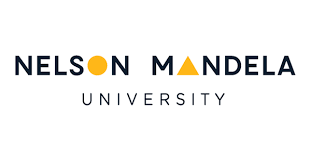Nelson Mandela University: South African learners combine maths and art in unique coffee table book
In the past, maths and art were always seen as separate disciplines, worlds apart. But when they are studied together, it’s clear there are strong links between the two.
A great deal of creativity goes into mathematical breakthroughs, while plenty of mathematical precision goes into an artwork.
To encourage learners to bridge the gap between maths and art – and gain the skills they will need to navigate careers in the highly innovative and technologically creative Fourth Industrial Revolution – schools across South Africa have had the opportunity to participate in a MathArt competition, run annually since 2018.
Now their maths-inspired artworks are available for all to see in a unique coffee table book, MathArt Expressions by South African Youth, launched on June 24.
The competition, run by Nelson Mandela University’s Govan Mbeki Mathematics Development Centre (GMMDC), draws entries from every province – with many of the winning entries going on to be displayed overseas, through the international Bridges Organisation, a partner with GMMDC, and a supporter of the global shift towards STEAM education, an educational approach that uses Science, Technology, Engineering, the Arts and Mathematics to encourage critical thinking among learners.
“In the book, we explore what we’ve done with the maths and art project and how we are working to promote the STEAM approach in teaching mathematics at school, in line with international trends,” said GMMDC director Prof Werner Olivier.
“The MathArt project is a practical way to promote creative problem-solving and trans-disciplinarity in schools across all socio-economic learning environments.”
True to form, the book uses a metaphor from the world of science and maths – the natural processes of a baobab tree – to explain how the art competition evolved.
Using more visuals than words, the “roots” chapter tells the story of GMMDC and how its emphasis on STEAM education inspired the competition. The “trunk” chapter expands on the competition and shares how it has grown from provincial to national level, including more and more learners and educators, and how it has also strengthened maths education. The “branches” chapter describes the incredible artworks received from the learners, and the different themes they have explored, while the “fruits” chapter depicts the unexpected outcomes, for instance, how the learners have shared the emotions they have experienced – both their frustration and excitement – as they have grappled with the subject of maths, or the searching questions they have asked about the subjects they explore, or about current world issues and life. The “reach” chapter covers the competition’s footprint, from an educational and international perspective.
“The MathArt project has gained a lot of support over the years from schools across the country,” said GMMDC project coordinator Carine Steyn. “And every year, we are blown away by the calibre of the entries.
“One of our aims has also been to make the project as accessible as possible to all learners, especially those in under-resourced schools. All you need to enter the competition is a piece of a paper and a pencil.”
Learners submit a photograph of their artworks online, and then the selected top entrants courier their artworks to GMMDC for final adjudication by a diverse panel of judges, including mathematicians, artists, teachers, lecturers, STEAM educators, architects and designers. Where necessary, GMMDC assists learners to submit their artworks.
“Through the competition, we can encourage learners and teachers to see maths differently. They are encouraged to see maths as not boring, but relevant and fun,” said Steyn.
Over the years, the project has also gained the support of a number of organisations, including the Eastern and Western Cape Departments of Basic Education, Umalusi (the Council for Quality Assurance in General and Further Education and Training), the South African Mathematics Foundation (SAMF), the Centre for the Advancement of Science and Mathematics Education (CASME), the Association of Science Technology Engineering Mathematics and Innovation (Astemi) and several others.

